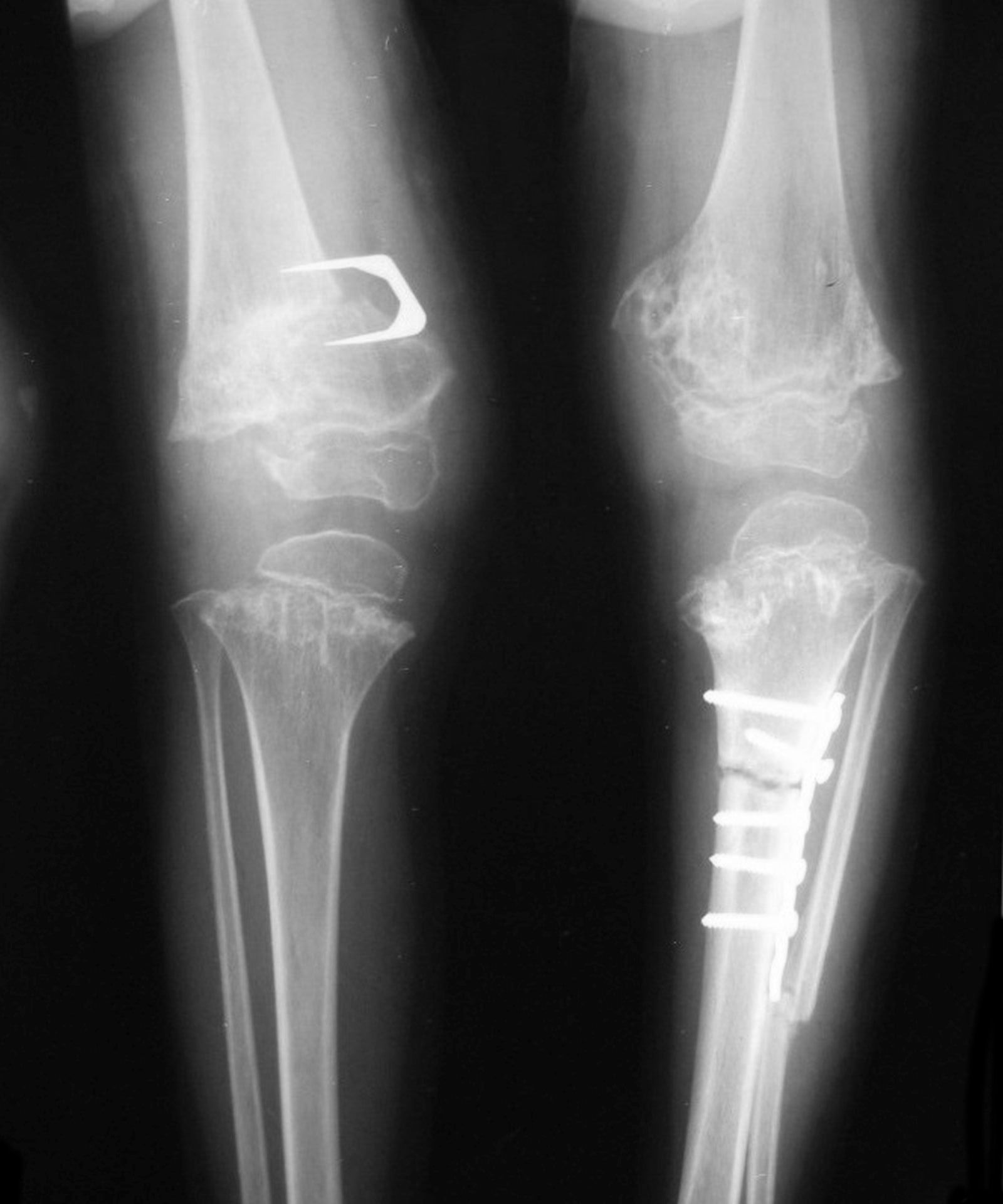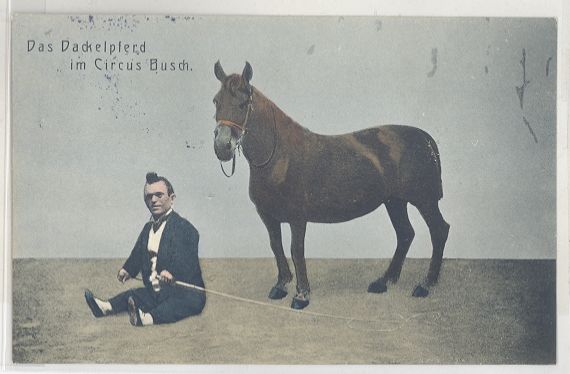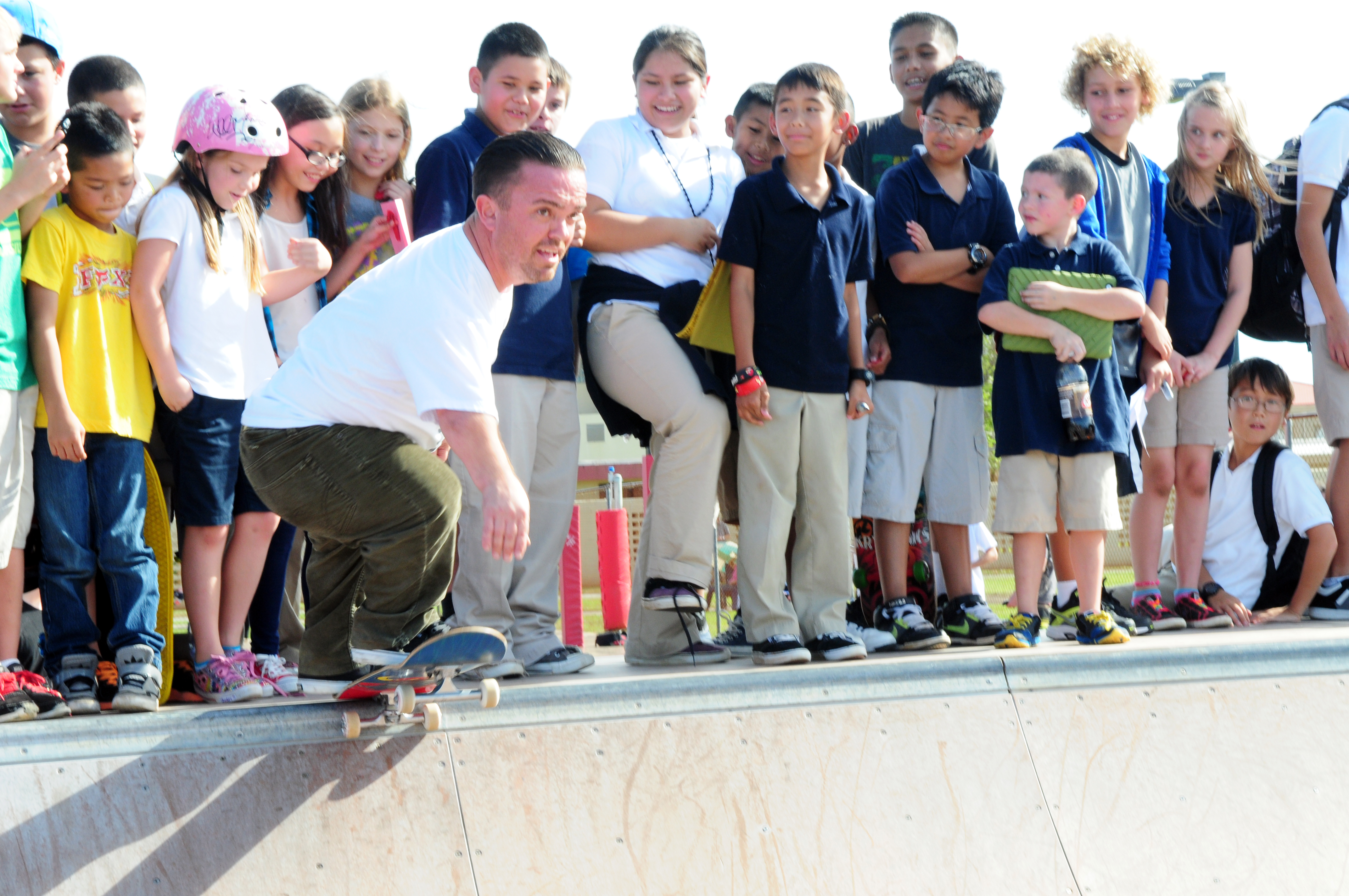|
Achondroplastic
Achondroplasia is a genetic disorder with an autosomal dominant pattern of inheritance whose primary feature is dwarfism. In those with the condition, the arms and legs are short, while the torso is typically of normal length. Those affected have an average adult height of for males and for females. Other features can include an enlarged head and prominent forehead. Complications can include sleep apnea or recurrent ear infections. Achondroplasia includes short-limb skeletal dysplasia with severe combined immunodeficiency. Achondroplasia is caused by a mutation in the fibroblast growth factor receptor 3 (''FGFR3'') gene that results in its protein being overactive. Achondroplasia results in impaired endochondral bone growth (bone growth within cartilage). The disorder has an autosomal dominant mode of inheritance, meaning only one mutated copy of the gene is required for the condition to occur. About 80% of cases occur in children of parents of average stature and resul ... [...More Info...] [...Related Items...] OR: [Wikipedia] [Google] [Baidu] |
Pseudoachondroplasia
Pseudoachondroplasia is an inherited disorder of bone growth. It is a genetic autosomal dominant disorder. It is generally not discovered until 2–3 years of age, since growth is normal at first. Pseudoachondroplasia is usually first detected by a drop of linear growth in contrast to peers, a waddling gait or arising lower limb deformities. Pseudoachondroplasia (also known as PSACH, pseudoachondroplastic dysplasia, and pseudoachondroplastic spondyloepiphyseal dysplasia syndrome) is an osteochondrodysplasia that results in mild to severely short stature due to the inhibition of skeletal growth primarily in the limbs. Though similarities in nomenclature may cause confusion, pseudoachondroplasia should not be confused with achondroplasia, which is a clinically and genetically distinct skeletal dysplasia. Pseudoachondroplasia is caused by a heterozygous mutation in the gene encoding cartilage oligomeric matrix protein (COMP). Mutation in the COMP gene can also cause multiple e ... [...More Info...] [...Related Items...] OR: [Wikipedia] [Google] [Baidu] |
Dwarfism
Dwarfism is a condition wherein an organism is exceptionally small, and mostly occurs in the animal kingdom. In humans, it is sometimes defined as an adult height of less than , regardless of sex; the average adult height among people with dwarfism is , although some individuals with dwarfism are slightly taller. ''Disproportionate dwarfism'' is characterized by either short limbs or a short torso. In cases of ''proportionate dwarfism'', both the limbs and torso are unusually small. Intelligence is usually normal, and most have a nearly normal life expectancy. People with dwarfism can usually bear children, though there are additional risks to the mother and child dependent upon the underlying condition. The most common and recognisable form of dwarfism in humans (comprising 70% of cases) is achondroplasia, a genetic disorder whereby the limbs are diminutive. Growth hormone deficiency is responsible for most other cases. Treatment depends on the underlying cause. Those ... [...More Info...] [...Related Items...] OR: [Wikipedia] [Google] [Baidu] |
Jason Acuña
Jason Shannon Acuña (born May 16, 1973), better known by his stage name Wee Man, is an American stunt performer, television personality, professional skateboarder, and actor. He is one of the stars of '' Jackass'' and the host of Fox Sports Net's skateboarding show ''54321''. Acuña has achondroplasia, a form of dwarfism. Life and career Born in Pisa, Italy, Acuña grew up in Torrance, California, and attended North High School. He is of Mexican and German descent. He was the subscription manager for the skateboard magazine '' Big Brother''. His association with that magazine led him to become involved with the '' Jackass'' television series in 2000. Acuña's ''Jackass'' antics include skating as an Oompa-Loompa, kicking himself in the head, dressing as a king while rolling Johnny Knoxville down a staircase in a red carpet, and doing deep-knee bends while holding basketball star Shaquille O'Neal on his back. A recurring gag involves Preston Lacy asking someone to help him ... [...More Info...] [...Related Items...] OR: [Wikipedia] [Google] [Baidu] |
Gene
In biology, the word gene (from , ; "... Wilhelm Johannsen coined the word gene to describe the Mendelian units of heredity..." meaning ''generation'' or ''birth'' or ''gender'') can have several different meanings. The Mendelian gene is a basic unit of heredity and the molecular gene is a sequence of nucleotides in DNA that is transcribed to produce a functional RNA. There are two types of molecular genes: protein-coding genes and noncoding genes. During gene expression, the DNA is first copied into RNA. The RNA can be directly functional or be the intermediate template for a protein that performs a function. The transmission of genes to an organism's offspring is the basis of the inheritance of phenotypic traits. These genes make up different DNA sequences called genotypes. Genotypes along with environmental and developmental factors determine what the phenotypes will be. Most biological traits are under the influence of polygenes (many different genes) as well as ... [...More Info...] [...Related Items...] OR: [Wikipedia] [Google] [Baidu] |
Fibroblast Growth Factor Receptor 3
Fibroblast growth factor receptor 3 is a protein that in humans is encoded by the ''FGFR3'' gene. FGFR3 has also been designated as CD333 (cluster of differentiation 333). The gene, which is located on chromosome 4, location q16.3, is expressed in tissues such as the cartilage, brain, intestine, and kidneys. The FGFR3 gene produces various forms of the FGFR3 protein; the location varies depending on the isoform of the FGFR3 protein. Since the different forms are found within different tissues the protein is responsible for multiple growth factor interactions. Gain of function mutations in FGFR3 inhibits chondrocyte proliferation and underlies achondroplasia and hypochondroplasia. Function The protein encoded by this gene is a member of the fibroblast growth factor receptor family, where amino acid sequence is highly conserved between members and throughout evolution. FGFR family members differ from one another in their ligand affinities and tissue distribution. A full-length r ... [...More Info...] [...Related Items...] OR: [Wikipedia] [Google] [Baidu] |
Short-limb Skeletal Dysplasia With Severe Combined Immunodeficiency
Short-limb skeletal dysplasia with severe combined immunodeficiency is an extremely rare autosomal recessive type of achondroplasia which is characterized by short stature, bowing of the long bones, and generalized metaphyseal abnormalities alongside signs of SCID such as recurrent severe infections, failure to thrive, chronic diarrhea Diarrhea, also spelled diarrhoea, is the condition of having at least three loose, liquid, or watery bowel movements each day. It often lasts for a few days and can result in dehydration due to fluid loss. Signs of dehydration often begin w ..., and a notable absence of T and B lymphocytes. Around 11 cases have been described in medical literature. References {{reflist Cell surface receptor deficiencies Connective tissue diseases Growth disorders Rare diseases Immunodeficiency Genetic diseases and disorders Autosomal recessive disorders ... [...More Info...] [...Related Items...] OR: [Wikipedia] [Google] [Baidu] |
Ear Infections
Otitis is a general term for inflammation or infection, inner ear infection, middle ear infection of the ear, in both humans and other animals. When infection is present, it may be viral or bacterial. When inflammation is present due to fluid build up in the middle ear and infection is not present it is considereOtitis media with effusion It is subdivided into the following: * ''Otitis externa'', external otitis, or "swimmer's ear", involves the outer ear and ear canal. In external otitis, we see tenderness in the pinna—i.e., the outer ear hurts when touched or pulled. * ''Otitis media'', or middle ear infection, involves the middle ear. In otitis media, the ear is infected or clogged with fluid behind the ear drum, in the normally air-filled middle-ear space. This is the most common infection and very common in babies below 6 months. This condition sometimes requires a surgical procedure called ''myringotomy'' and tube insertion. * '' Otitis interna'', or labyrinthitis, invo ... [...More Info...] [...Related Items...] OR: [Wikipedia] [Google] [Baidu] |
Sleep Apnea
Sleep apnea, also spelled sleep apnoea, is a sleep disorder in which pauses in breathing or periods of shallow breathing during sleep occur more often than normal. Each pause can last for a few seconds to a few minutes and they happen many times a night. In the most common form, this follows loud snoring. There may be a choking or snorting sound as breathing resumes. Because the disorder disrupts normal sleep, those affected may experience sleepiness or feel tired during the day. In children, it may cause hyperactivity or problems in school. Sleep apnea may be either obstructive sleep apnea (OSA), in which breathing is interrupted by a blockage of air flow, central sleep apnea (CSA), in which regular unconscious breath simply stops, or a combination of the two. OSA is the most common form. OSA has four key contributors; these include a narrow, crowded, or collapsible upper airway, an ineffective pharyngeal dilator muscle function during sleep, airway narrowing during sleep a ... [...More Info...] [...Related Items...] OR: [Wikipedia] [Google] [Baidu] |
Skull Bossing
Skull bossing is a descriptive term in medical physical examination indicating a protuberance of the skull, most often in the frontal bones of the forehead ("frontal bossing"). Although prominence of the skull bones may be normal, skull bossing may be associated with certain medical conditions, including nutritional, metabolic, hormonal, and hematologic disorders. Frontal bossing Frontal bossing is the development of an unusually pronounced forehead which may also be associated with a heavier than normal brow ridge. It is caused by enlargement of the frontal bone, often in conjunction with abnormal enlargement of other facial bones, skull, mandible, and bones of the hands and feet. Frontal bossing may be seen in a few rare medical syndromes such as acromegaly – a chronic medical disorder in which the anterior pituitary gland produces excess growth hormone (GH). Frontal bossing may also occur in diseases resulting in chronic anemia, where there is increased hematopoiesis and e ... [...More Info...] [...Related Items...] OR: [Wikipedia] [Google] [Baidu] |
Macrocephaly
Macrocephaly is a condition in which circumference of the human head is abnormally large. It may be pathological or harmless, and can be a familial genetic characteristic. People diagnosed with macrocephaly will receive further medical tests to determine whether the syndrome is accompanied by particular disorders. Those with benign or familial macrocephaly are considered to have megalencephaly. Causes Many people with abnormally large heads or large skulls are healthy, but macrocephaly may be pathological. Pathologic macrocephaly may be due to megalencephaly (enlarged brain), hydrocephalus (abnormally increased cerebrospinal fluid), cranial hyperostosis (bone overgrowth), and other conditions. Pathologic macrocephaly is called "syndromic", when it is associated with any other noteworthy condition, and "nonsyndromic" otherwise. Pathologic macrocephaly may be caused by congenital anatomic abnormalities, genetic conditions, or by environmental events. Many genetic conditions ... [...More Info...] [...Related Items...] OR: [Wikipedia] [Google] [Baidu] |
Torso
The torso or trunk is an anatomical term for the central part, or the core, of the body of many animals (including humans), from which the head, neck, limbs, tail and other appendages extend. The tetrapod torso — including that of a human — is usually divided into the ''thoracic'' segment (also known as the upper torso, where the forelimbs extend), the '' abdominal'' segment (also known as the "mid-section" or "midriff"), and the '' pelvic'' and '' perineal'' segments (sometimes known together with the abdomen as the lower torso, where the hindlimbs extend). Anatomy Major organs In humans, most critical organs, with the notable exception of the brain, are housed within the torso. In the upper chest, the heart and lungs are protected by the rib cage, and the abdomen contains most of the organs responsible for digestion: the stomach, which breaks down partially digested food via gastric acid; the liver, which respectively produces bile necessary for digestion; the la ... [...More Info...] [...Related Items...] OR: [Wikipedia] [Google] [Baidu] |
Rhizomelia
Rhizomelia refers to either a disproportion of the length of the proximal limb, such as the shortened limbs of achondroplasia, or some other disorder of the hip or shoulder. According to Stedman's medical dictionary "rhizomelic" means "relating to hip or shoulder joints", while "micromelic" means "having disproportionately short or small limbs". Genetic skeletal dysplasias or Osteochondrodysplasia frequently lead to short stature, occasionally termed dwarfism, which is classified into proportionate and disproportionate short stature. Disproportionate short stature is further classified short-limb short stature and short-trunk short stature. In turn, short-limb short stature is classified into a) Rhizomelic, b) mesomelic and c) acromelic short stature. Rhizomelic short stature refers to skeletal dysplasias where the main shortening is due to involvement of the proximal limb segments i.e. femora and humeri. Typical examples of Rhizomelic short stature are achondroplasia and pseudoach ... [...More Info...] [...Related Items...] OR: [Wikipedia] [Google] [Baidu] |







